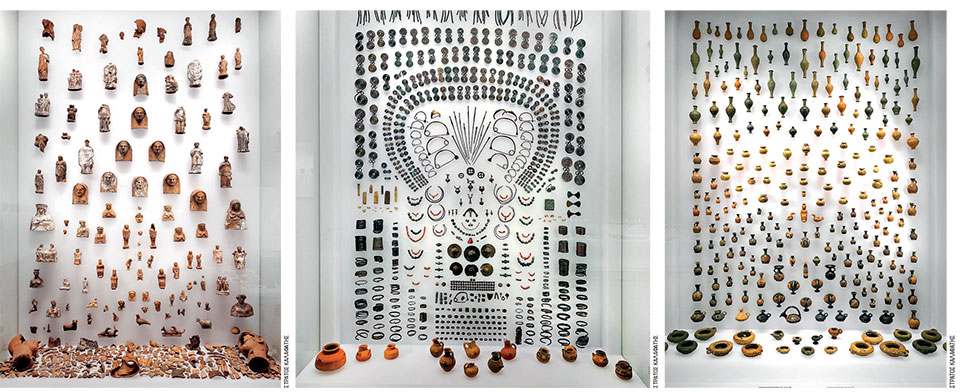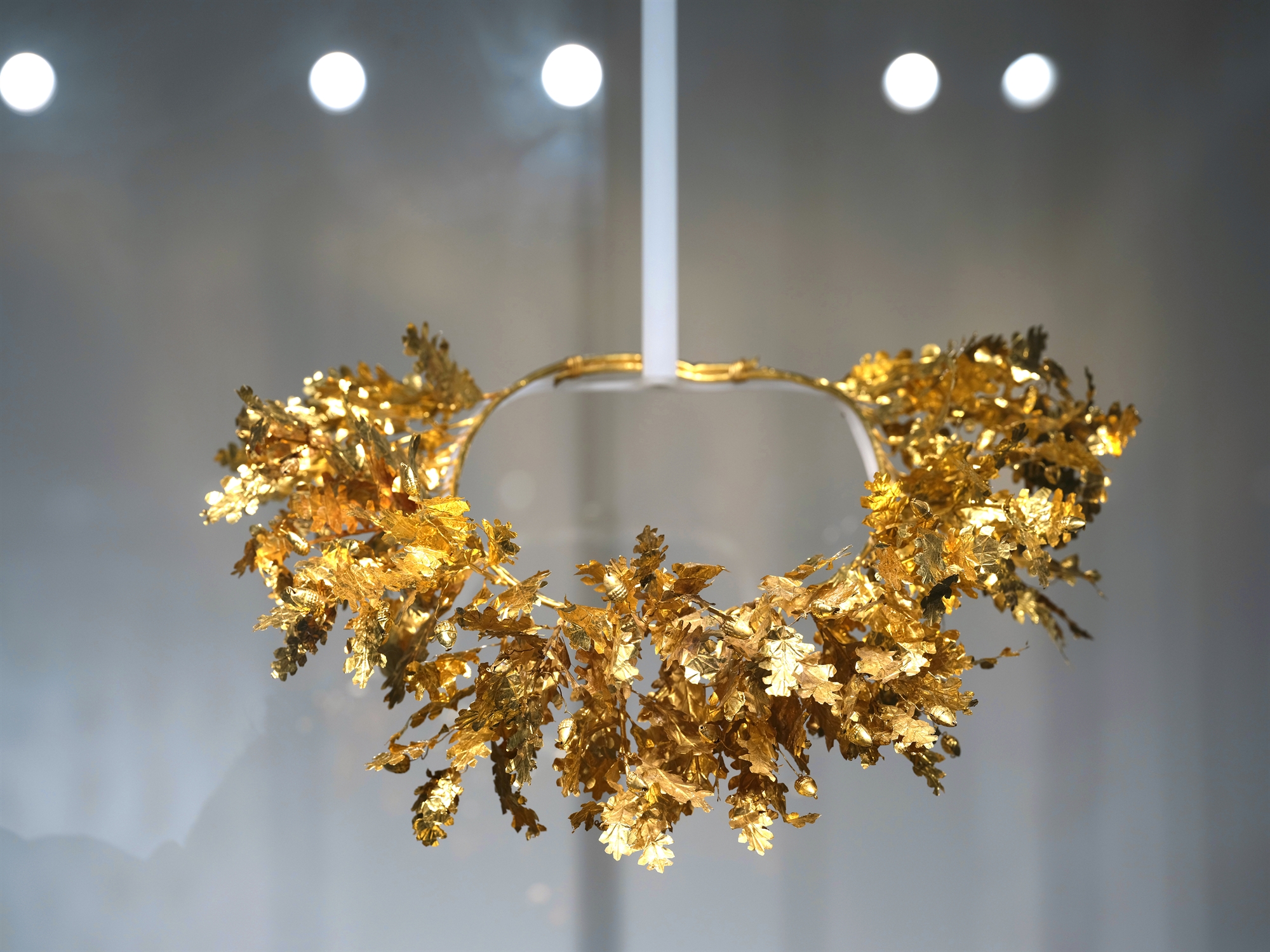
“Gate” in the history of the royal metropolis of the Macedonians, goats“window” into the palimpsest image of the Goats emerging point by point from the soil, a mental “entrance” into the era of the Hellenistic world and at the same time a vestibule for Vergina Archaeological Park. Its new building embodies this triple role. Multicenter Goat Museum which opens to the public today. Yesterday we passed this gate and saw a holistic and dynamic approach to the relationship between the archaeological site, the museum and the visitor. The Prime Minister opened the museum yesterday. Kyriakos Mitsotakis, in the presence of Minister of Culture Linas Mendonis, and opened a universal and ever-evolving museum structure that will encompass, unite and integrate the entire ancient site, where 45 years ago the late Professor Manolis Andronikos “radically changed our perception of ancient Macedonia”, as the English historian N. Hammond. “The multi-purpose goat promotion through the work of the new museum seeks to present its fruitful journey over the years along with its ancient glory. Because the past must always be preserved in the present and participate in building the tomorrow of every society,” the Prime Minister said.
“An Impossible Dream”
“An elusive dream has come true decades later. A museum that resurrects Eges, the capital of the Macedonians,” said Angeliki Kottaridis, head of the Ephorate of Antiquities of Imatija, an archaeologist who dedicated her life to Eges. “We took a rather unusual approach to archaeological things with conceptual elements and a strictly abstract aesthetic,” he added. The new museum, an oblong building with an area of 7000 sq.m. with exhibitions in atriums and indoors, it anticipates the visitor and defines the cultural routes in the Polycentric Museum, as the Archaeological Park of Ej was named, where the enclaves of the ancient city are scattered, referring to the urban pattern of Ej with the widest residential dispersion: the barrow of the royal tombs with the old museum, Philip’s palace , which is being restored on an area of 30 acres, and the Kozlov necropolis with the royal cluster of Temenides.

At the entrance to the new museum, two large digital projections broadcast scenes from the campaign of Alexander the Great from 1000 hours of filming, which took place in the archaeological excavations of Greece to the depths of the East (Turkey, Egypt, Jordan, etc.), where the Macedonian king spread Hellenism. The digital museum “Alexander the Great, from Aegus to the World”, which will function later, will hold his presence and activities in the Hellenistic world.
With indoor and outdoor exhibitions, the new museum anticipates the visitor and defines the cultural routes of the archaeological site.
In the permanent sculpture hall, among the votives and inscriptions, we saw an amazing veiled statue of the Macedonian queen Eurydice, who regained her standing, proud, majestic position. “Daughter of the Lygistid royal house, worthy wife, mother of three kings, including Philip II, during whose years the holy city experienced great prosperity, and grandmother of the cosmocracy Alexander III, she was a woman who changed History.” as Mrs. Kottaridis says. “The marble statue in the form of Hera, queen of the gods, the eternal bride of sacred marriage, was the prototype of a veiled figure of the 4th century BC. for example, which spread throughout the Hellenistic world, to queens and Roman empresses, to priestesses of cities, to the Virgin Mary with an omophorion, the queen and nymph of God.
Kingdom”
In the atrium of the new museum, we saw that a part of the facades (30 meters long) of the palace complex – “Basileon” with the ancient name Kozlov, with an area of 15,000 sq.m., had been resurrected. . it is the largest building in classical Greece. A simple, functional and at the same time monumental and imposing building, in which Philip II modernized and renovated Ej, the royal capital of the Macedonians, with all the facilities for the exercise of multi-level state power. A small periodical exhibition “Ecumenes antidoro” with coins loaned by the collector Theodoros Aravanis “accepts” the leaders active in the Hellenistic world: the Ptolemies, the Attalides, the Seleucids, the kings of Bithynia and Pontus, Bactria and India, the Arabs and all who called themselves Macedonians and honored vision of a warrior several centuries after Alexander.
In the same space, the art exhibition “Material of Memory” with the creations of Christos Bokoros, which he created especially for the new museum, serves to osmosis the cultural heritage with a modern visual search.

Fragments of destruction become impressive exhibits
The palimpsest image of the ancient place has been resurrected in the central exposition of the new museum “Memory of the Goat”. It is impressive how the fragments of the layers of destruction are transformed into impressive exhibits to “share their truth in a completely abstract environment that respects and deifies them,” as Ms. Kottaridis said. Fragments from the layers of destruction reveal the identity of the ancient city, the life of the Macedonians, the precious daily life, the remnants of the festivities and traces of the ceremony, the birth and death of the palace of “an archetypal building that haunted the architecture of the Hellenistic world.”
Macedonian goat weapons, such as bronze and iron swords, knives, spearheads and darts, arrows and remnants of sarissas that accompanied them in life and death, craters, jugs and goblets from feasts, Hellenistic tiles with seals, names of lords, owners, sponsors or officials, fragments of glass and ivory, small carnations from precious furniture, traces of jewelry and tools, keys to temples, ideogram keys of lost houses make up the subsections of the exhibition.

Fanciful objects place us in the “hiding places” at home, in everyday life and in everything that concerns the body: women’s jewelry (jewelry, incense, buckles, forks) and men’s, bottles with precious perfumes and ointments, beauty attributes. At the end of “Nekia” with the remains of the magnificent Temenid funeral pyres, funeral treasures, traces of the symbols of their power. Women’s costumes adorned with gold jewels come to life again at the end of the exhibition, ten “Miss Goats” adorned with all kinds of jewels. Mothers and wives, sisters and daughters, symbols and bearers of power. It is no coincidence that we see these women signing or calling themselves men by the name of their father and not by the name of their husband: “Eurydice Sirra” or “Thessalonica Philipou Basilissa”.
Breath of Andronicus.
“Vergina doesn’t end here,” says Ms. Kottaridis. The restoration of the archaeological and monumental inventory continues, which simultaneously preserves the memory and work of Manolis Andronikos (the new amphitheater bears his name). It is a project of great spirit, “the result of the joint efforts of recent years, because there is no place in culture for party barriers or party minorities,” as the prime minister noted. Mr. Mitsotakis acknowledged that “the number of visitors visiting important Greek cultural heritage sites remains low.” The Polycentric Goat Museum, which includes one of the most recognizable and popular UNESCO monuments, aims to surpass these numbers by visiting more than Thessaloniki’s metropolitan museums.
Source: Kathimerini
Ashley Bailey is a talented author and journalist known for her writing on trending topics. Currently working at 247 news reel, she brings readers fresh perspectives on current issues. With her well-researched and thought-provoking articles, she captures the zeitgeist and stays ahead of the latest trends. Ashley’s writing is a must-read for anyone interested in staying up-to-date with the latest developments.